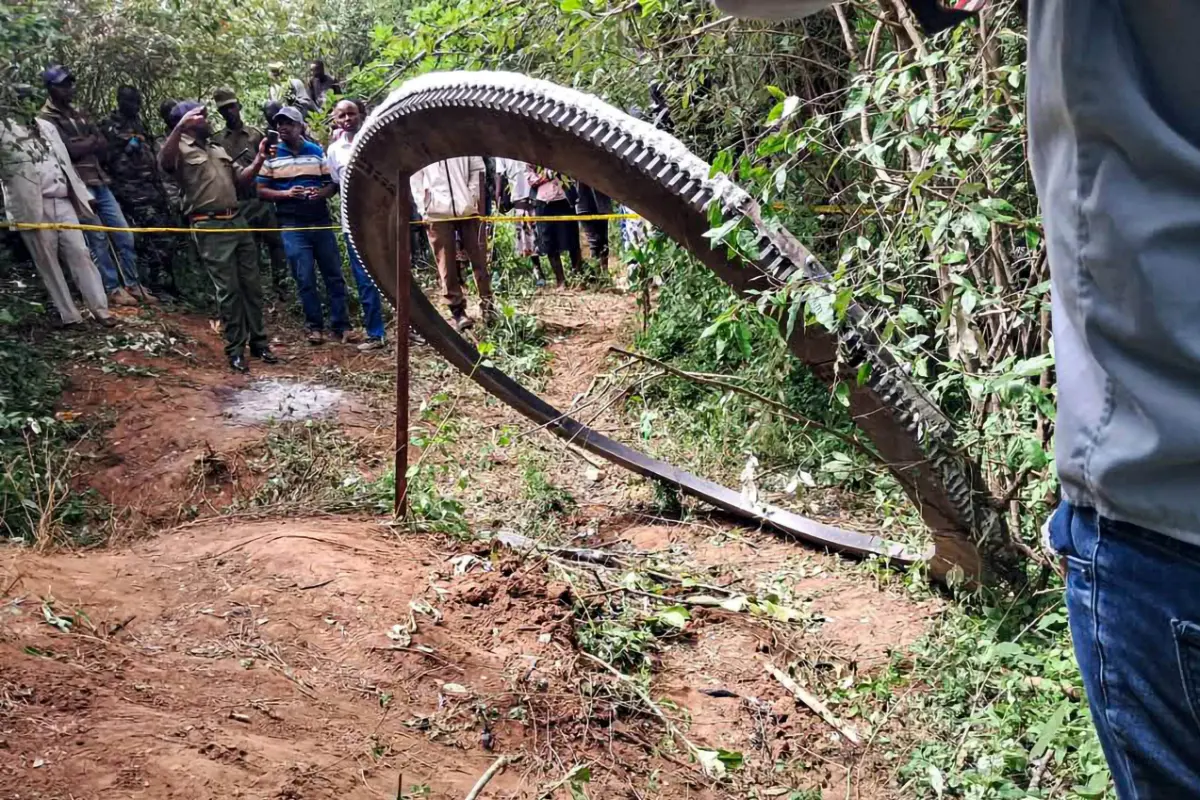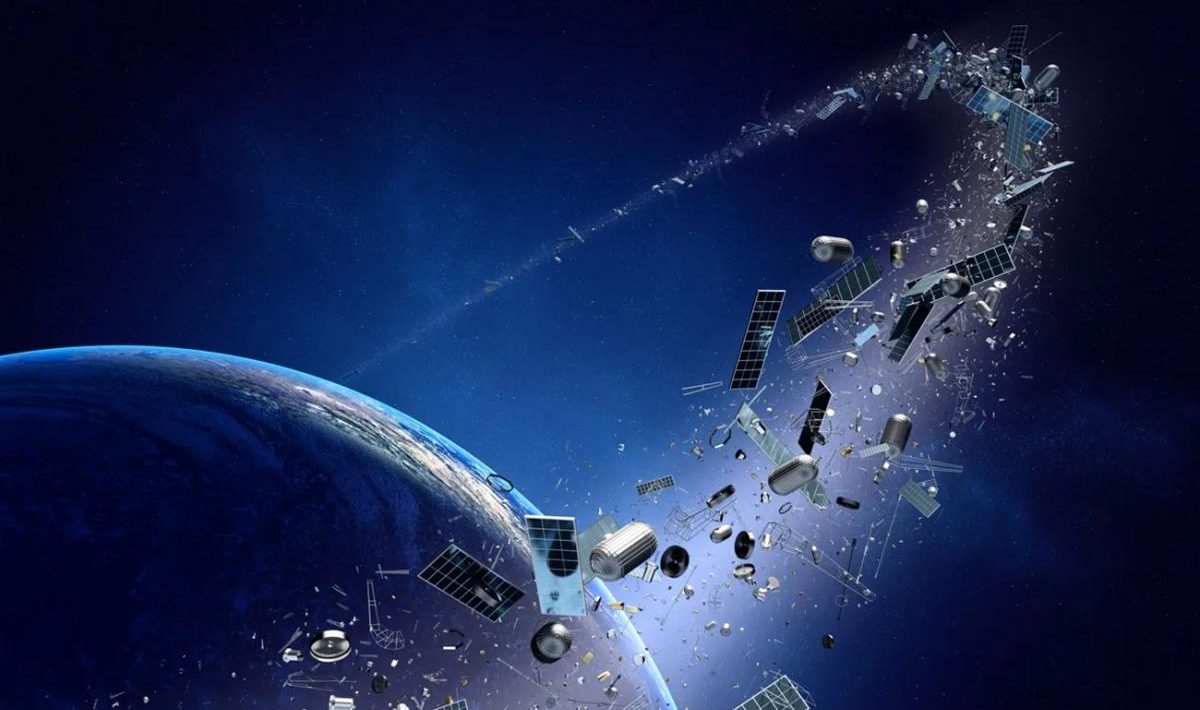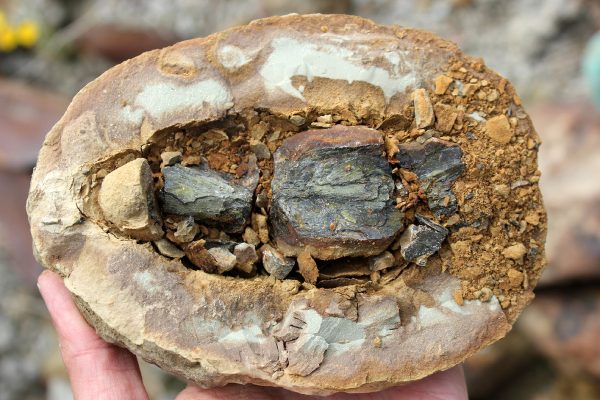A fragment of a rocket landed near Nairobi, reigniting the great debate about the dangers of space debris.
Table of Contents
On 30 December 2024, the inhabitants of a village southeast of Nairobi, Kenya, experienced a moment as unusual as it was disturbing: a metal ring more than two and a half metres in diameter and weighing nearly 500 kilograms fell from the sky, striking a rural area. Although no one was injured, the event generated great excitement and reignited the global debate about the real dangers of space debris orbiting the Earth.
The first images released by local residents showed a huge metal structure partially buried in the ground. Local authorities immediately cordoned off the area while the Kenya Space Agency (KSA) sent a team of experts to analyse the object. After several days of inspections, the technicians concluded that it was a separation ring from a space launch vehicle, a piece designed to detach during a rocket’s ascent.
Such components usually disintegrate upon re-entry into the atmosphere or fall into uninhabited areas such as oceans, although they sometimes remain in orbit for years. In this case, the fact that such a large fragment landed in a populated area was described by the KSA as ‘an isolated incident’, although they admitted that it represented a violation of international protocols linking the ring to the Indian space agency, leaving its true origin unclear.
Space debris is a more serious problem than is commonly believed
Beyond this specific episode, the incident has once again brought to the fore an increasingly worrying problem: the accumulation of space debris. According to data from NASA, there are currently more than 27,000 large objects orbiting the Earth, not counting millions of smaller fragments that are impossible to track but equally dangerous. These debris travel at extremely high speeds, making them a real threat to satellites and space stations as well as to people on the Earth’s surface.
In fact, this is not an isolated case: last year, a family in Florida filed a lawsuit after discovering that a fragment from the International Space Station had damaged their home. The possibility of a Kessler effect, a chain reaction of collisions that would generate even more debris, is a concern increasingly shared by governments and companies in the aerospace sector.

Related news
Following the incident in Kenya, the international community has intensified discussions on how to manage the problem of space debris more effectively. From satellites designed to capture debris in orbit to automatic deorbiting systems, solutions are multiplying, although the lack of global agreements and the associated costs remain an obstacle. The ring that fell in Africa now serves as a tangible reminder that responsible space management is not just a technical issue, but an urgent necessity to ensure safety on Earth and the future of space exploration.





